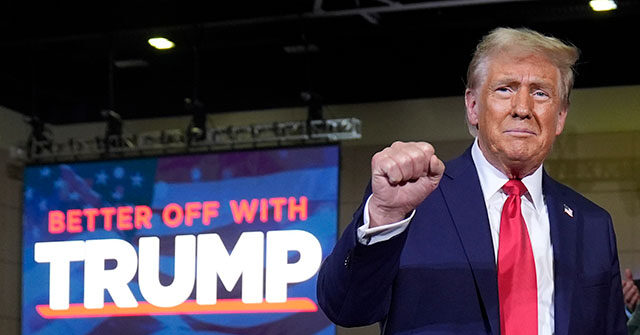A recent Washington Post/Schar School poll reveals that former President Donald Trump is perceived to better defend democracy than Vice President Kamala Harris, a finding that challenges Harris’s narrative about Trump being an unhinged threat to democracy. The poll, which analyzed data from key swing states such as Arizona, Georgia, and Pennsylvania, indicated that a significant plurality of voters would prefer Trump to Harris when asked who would be more effective in defending against threats to democracy. Specifically, 43% favored Trump over Harris’s 40%, illustrating a nuanced perspective among voters regarding their views on both candidates’ abilities to uphold democratic principles.
In addition, Trump’s appeal extends to key issues that voters prioritize, such as inflation, the economy, immigration, and crime, where he led Harris by significant margins. These issues resonate more closely with the electorate than the areas where Harris holds an advantage, like healthcare and abortion. The poll surveyed 5,016 registered voters, and its findings reflect a growing disconnect between Harris’s messaging strategy and the concerns that drive voter engagement in pivotal states leading up to the election.
Harris’s recent campaign strategy appeared to pivot from an optimistic “campaign of joy” to a more aggressive approach focusing on attacking Trump directly. This shift seems to echo past strategies employed by President Biden during his 2020 campaign and by Hillary Clinton in 2016, emphasizing the need to frame Trump as a dire threat. However, this tactical change could point to a lack of a unified message, which is typically crucial for candidates in the closing weeks of a presidential campaign. Harris’s renewed focus on negative campaigning raises questions about the effectiveness of her overall strategy amidst declining momentum.
Critically, the campaign’s messaging has not only included direct attacks on Trump but also an effort to tap into her prosecutorial persona to garner support from male voters and Republicans. Such strategies indicate desperation as they attempt to solidify her position as a strong alternative to Trump, primarily by echoing past critiques of his character and governance. This tactic, however, has faced criticism for failing to resonate with voters seeking a more unifying message.
Former President Barack Obama highlighted the alarming trend he perceives in Trump’s political ascent, where foundational democratic values are sidelined. He criticized the way Trump is perceived, suggesting that people often dismiss his irregular behavior as inconsequential, contrary to the seriousness expected from a president. This provides context to Harris’s concerns but also underscores the complexity of voter sentiment as they weigh Trump’s purported threats against the backdrop of his policy positions.
In summary, the polling data indicates that Trump’s popularity remains strong among key demographics in pivotal states due in part to his alignment with voters’ top concerns. Meanwhile, Harris’s shift from optimism to aggressive attack tactics may reflect a struggle to connect with voters meaningfully. The challenge for Harris lies in re-establishing a compelling narrative that resonates across ideological lines while addressing the electorate’s pressing issues and concerns surrounding democracy. As the election approaches, the effectiveness of her strategy will become increasingly pivotal in determining her political future. Ultimately, this evolving dynamic poses essential questions about public perception, campaign strategies, and the future of political discourse in America.

